
Healing Flowers – Info on Health Benefits and Uses
Published: 22/03/2024 | Updated: 22/03/2024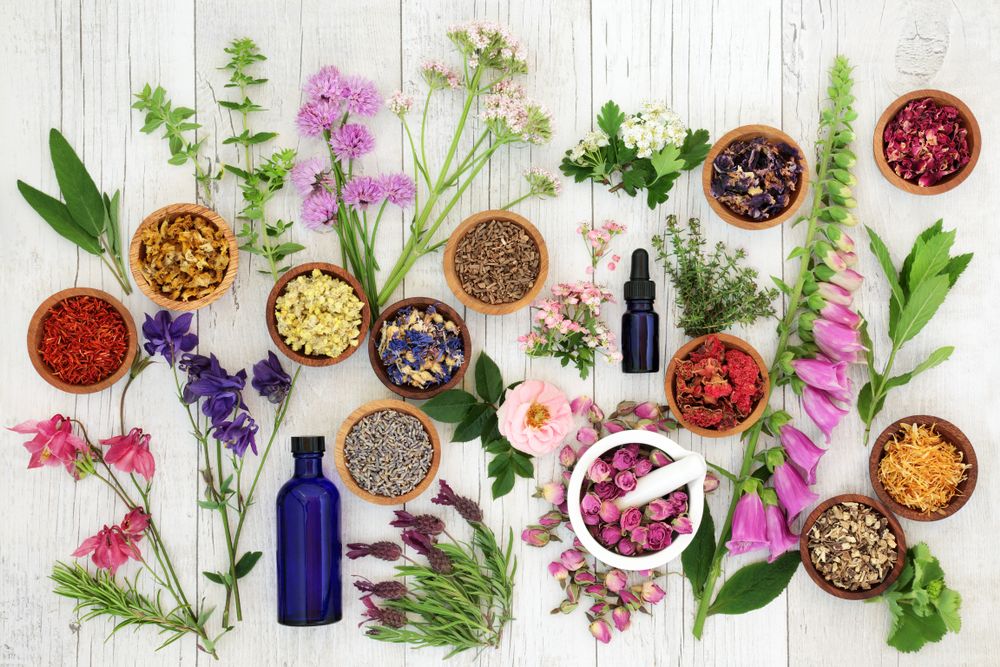


A great joy comes with researching and picking out the most suitable flowers for your home garden. And while the sight of a vibrant and fragrant haven is enough on its own, you could achieve so much more than that with your garden!
Flowers' therapeutic advantages are evident, from reducing anxiety fight depression to supporting restful sleep. In this article, we'll look into the healing properties of flowers and see how they might help us live happier, healthier lives.
The Health Benefits of Medicinal Flowers
For centuries, flowers have been used to cure a variety of health issues. Here are some of the major ways flowers are medical.
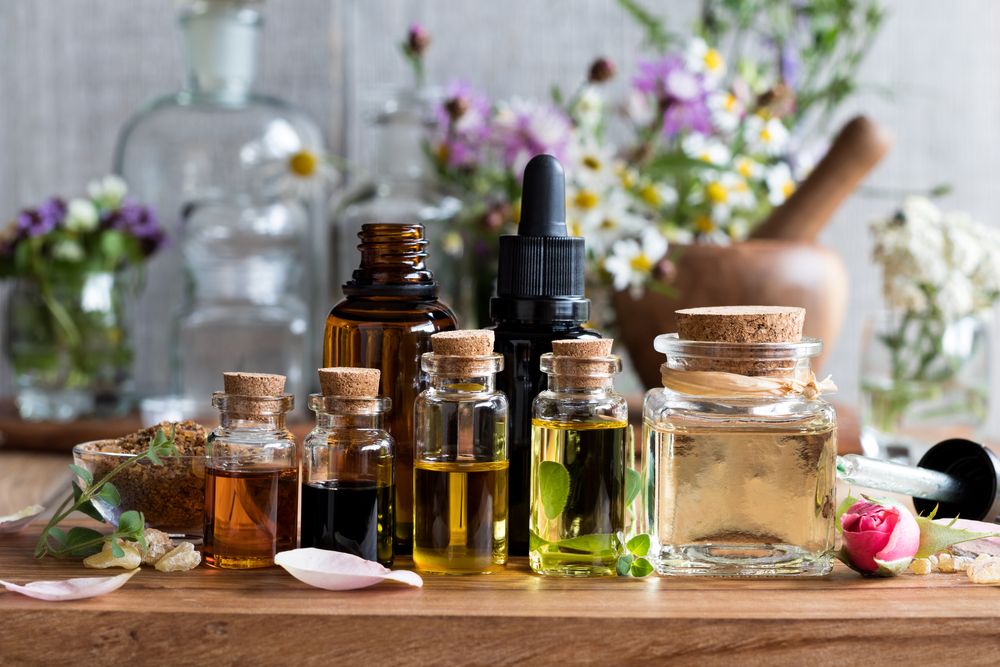
1. Aromatherapy
Aromatherapy is a common practice that promotes overall cardiovascular health and well-being by employing essential oils extracted from healing flowers.
Essential oil is concentrated plant extracts that include the aromatic and medicinal characteristics of flowers and other botanicals.
Some of the benefits of aromatherapy are...
Relaxation - Certain flower scents, such as lavender, chamomile, and ylang-ylang, are noted for their relaxing and healing properties.
Diffusing essential oils or using them in a relaxing bath can help reduce stress and anxiety while also fostering relaxation and tranquility.
Improved sleep - Many essential oils have sedative characteristics that might help you sleep better.
Lavender, Roman chamomile tea, and bergamot scents promote relaxation making it easier to fall and remain asleep.
Mood Improvement- Essential oils can have a significant impact on overall health and your mood.
Citrus rose, and jasmine scents are known for their uplifting characteristics, which can help you enhance your mood and increase feelings of happiness and well-being.

2. Pain Relief
Many healing flowers, such as medicinal plants such as ginger, turmeric, and calendula flowers, have natural anti-inflammatory effects.
These substances can aid in the reduction of inflammation in the body, which is frequently a source of pain and heart disease.
Some flowers, such as chamomile and lavender, have natural analgesic effects that can help with pain relief as they reduce discomfort and promote relaxation by inhibiting pain signals in the body.
Flowers such as peppermint and eucalyptus offer natural muscle-relaxing qualities.
These smells, whether applied topically or inhaled, can assist to relieve infections, relax tense muscles, and to relieve stress and discomfort.

3. Stress and Anxiety Relief
Stress and anxiety are hard to manage, and we all face them from a few drops from time to time.
Some healing flowers are ideal for getting some quality sleep and stress relief. For instance, the calming effects of jasmine and lavender on both the mind and body have been widely known, and both can help us get a better night's rest and manage stress well.
Their ability to take our high blood pressure, and reduce our heart rates can incredibly ease stress and fight depression and anxiety.
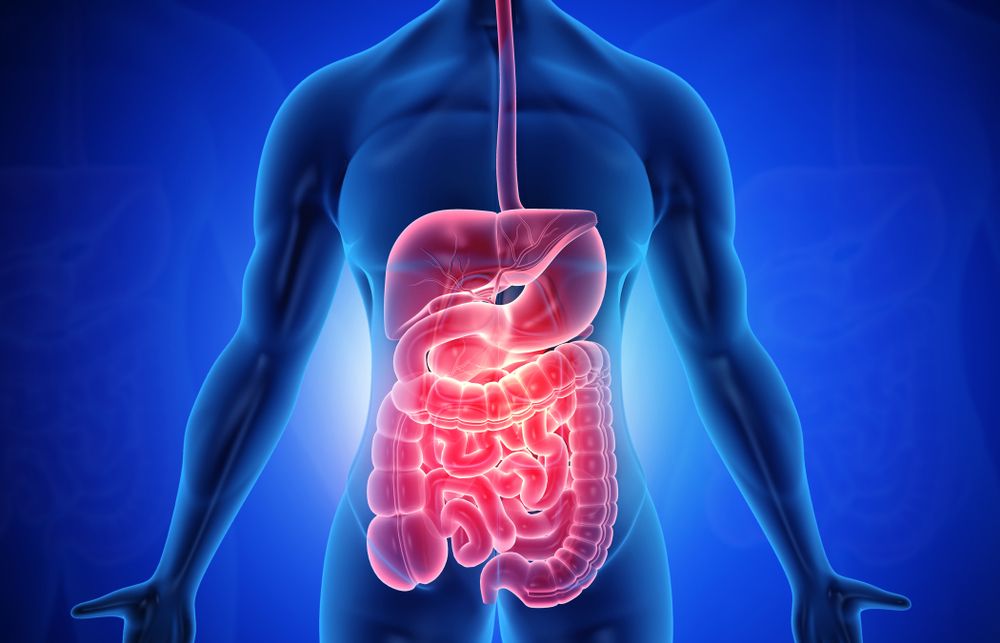
4. Improves Digestion
Incorporating flowers like dandelion and mint into your diet has been shown to improve digestive health. Incorporating more edible flowers and dried herbs into your diet may increase your intake of healthy plant-based chemicals with important antioxidant and anti-inflammatory qualities.
For a long time, people have turned to chamomile for relief from gastrointestinal distresses such as bloating, gas, indigestion, diarrhea, anorexia, motion sickness, feelings of nausea, and vomiting because of its reputation as a calming digestive aid.

5. Helps Healing Skin Conditions
These bright flowers are simple to grow and make great natural skin care ingredients. Your garden and face will be radiant!
Calendula essential oil, made from marigold flowers, is versatile. It soothes irritated skin and reduces inflammation. It's a great antibacterial and speeds up wound healing for injuries healing wounds, cuts, pimples, and infections.
Rose is also prominent in botanical skin care, as rose extract is good for moisturizing dry, skin conditions, but may be used on all skin types. Rose oil's antibacterial, astringent, and anti-inflammatory qualities help acne sufferers reduce redness.

6. Mental Health Benefits
A stunning bouquet of fresh flowers may do wonders for your mental well-being and creativity without being consumed or inhaled. We have a range of seasonal flowers that are sure to make you grin every time you see them, happiness guaranteed, whether you want to spruce up your house or business.
6 Medicinal Flowers and Their Healing Properties
Each flower has its own unique symbolism, aesthetic value, structure, and colors. In addition to that, certain flowers also have the healing power, to heal wounds and strengthen us. Let us get you familiar with some of them.
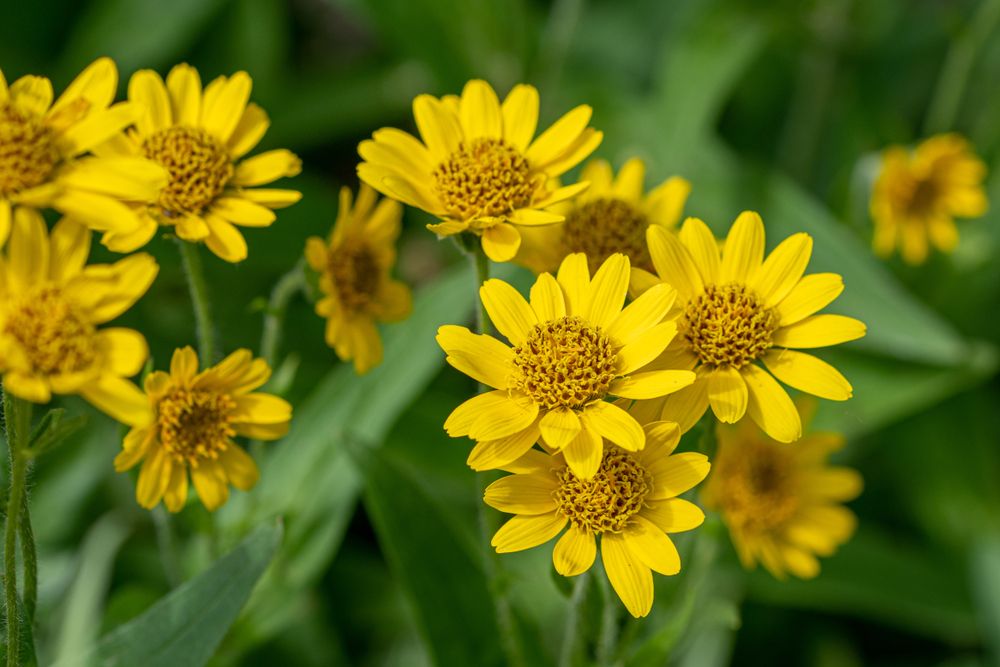
1. Arnica
Arnica is a perennial plant that grows naturally in the highest regions of Europe and Russia. The dried blooms of the arnica plant resemble daisies and are the major component of the plant used for therapeutic purposes. You can have dried flowers and also use the rhizomes and roots of the plant.
Arnica has been used for medicinal purposes for dozens of years, both internally and topically, using medicines produced from the blooming heads. External applications of arnica are effective for acne, bruising, sprains, and muscle pain.
It has also been applied topically as an antiseptic for cuts and gunshot wounds, a general topical counterirritant, and a central nervous system stimulant.
Arnica is used in a variety of hair care products, including tonics, dandruff remedies, cosmetics, and scents.
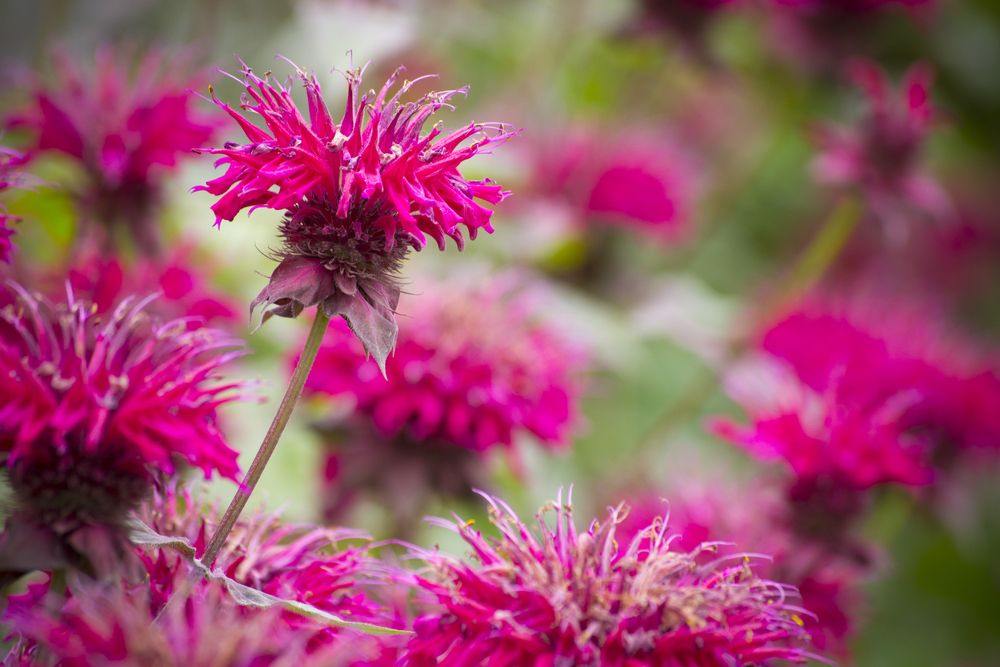
2. Bee Balm
Monarda, or "bee balm," is a common name for a North American perennial herb. It has strong, upright stems and leaves that resemble lances. Bee balm has colorful, fragrant petals that might be pink, red, purple, or white.
Compounds in bee balm, like thymol and carvacrol, have anti-inflammatory effects. Inflammation and swelling are two common health issues that these chemicals can help remedy.
Bee balm's sedative properties make it an effective remedy for gastrointestinal problems like indigestion and gas. Also, people with conditions of the digestive tract like gastritis and ulcers can benefit from its ability to calm the stomach lining and reduce inflammation of the digestive system.
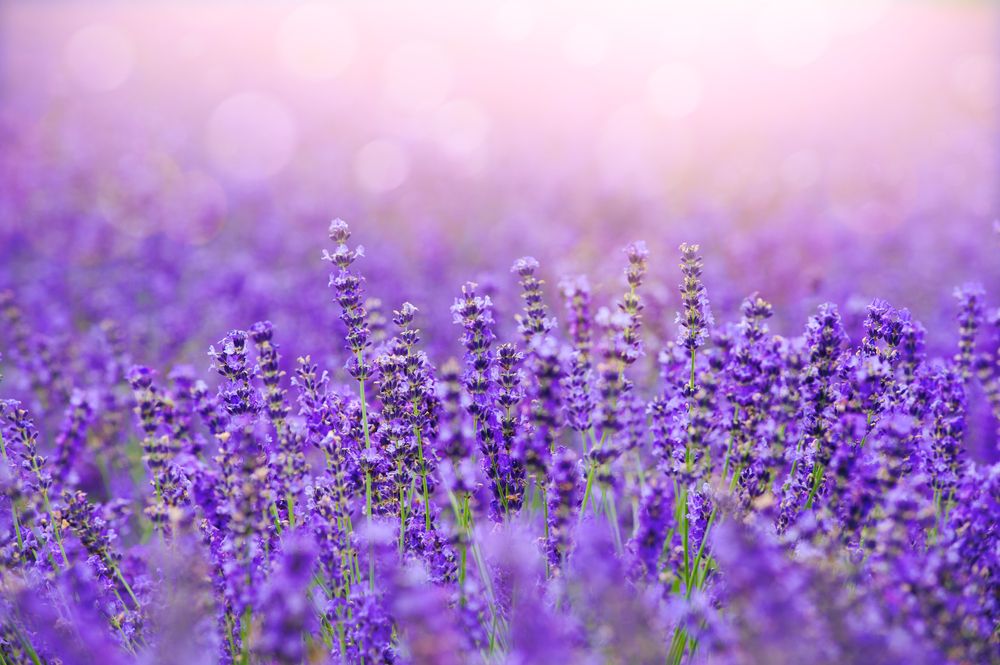
3. Lavender (Lavandula Angustifolia)
There is an oil in lavender, known as Lavandula Angustifolia, that may help relax muscles and reduce stress. The flower's oil can be used to treat a variety of ailments, including acne, burns, and other skin irritations, as well as relieve infections such as issues with the throat and chest thanks to its anti-inflammatory and antiseptic characteristics.
Some serious mental health and physical conditions, such as stress, anxiety, and insomnia, have been shown to respond positively to lavender oil.
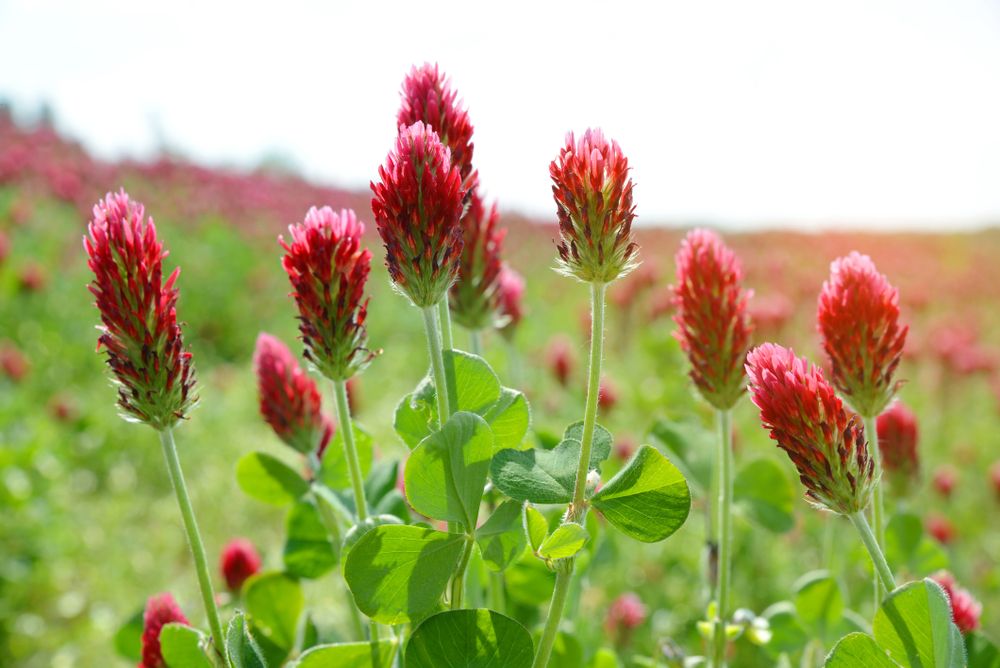
4. Red Clover
In the past, red clover was utilized as a treatment for asthma as well as whooping cough. Today, menopausal symptoms, high blood pressure, and cholesterol levels, heart disease, and osteoporosis are the conditions for which red clover extracts are most commonly pitched as a treatment.
It also has the potential to manage stress, increase circulation and assist with weight loss. In traditional medical practice, an extract made from red clover has been shown to improve the health of both the skin and the hair.
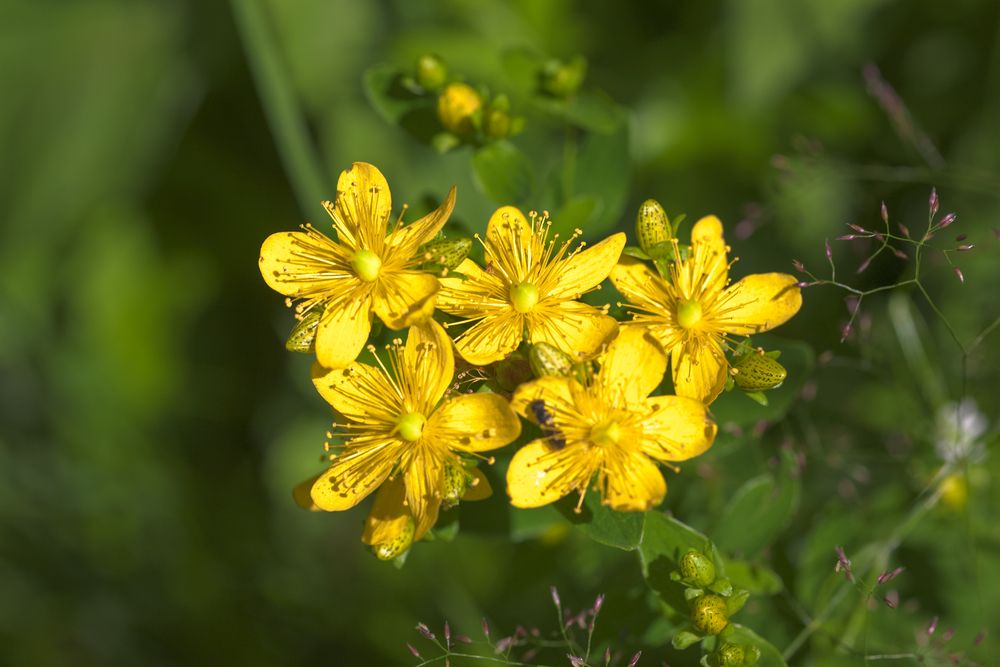
5. St. John’s Wort (aka Hypericum perforatum)
Hypericum perforatum, more commonly known as St. John's wort, is a flowering plant in the genus Hypericum that has been used as a medical herb for more than 2,000 years due to its antidepressant and anti-inflammatory effects.
St. John's wort, thanks to its mood-boosting properties, has been utilized as a natural treatment for PMS symptoms like melancholy, chronic fatigue, and hormonal imbalance.
St. John's wort has been studied as a potential herbal treatment for the emotional and physical discomforts associated with menopause.
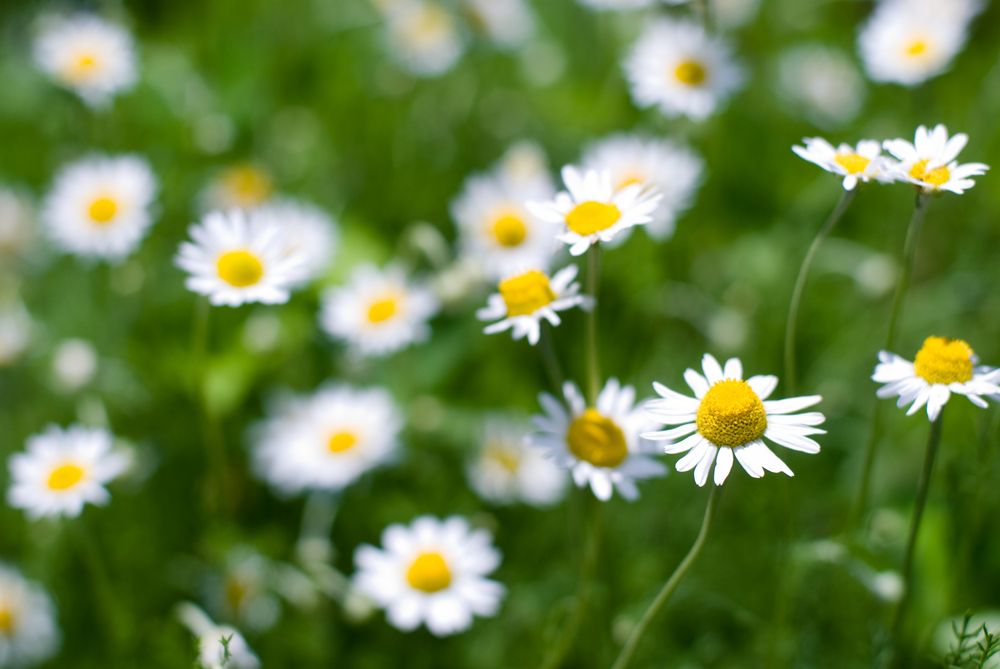
6. Roman Chamomile (Anthemis Nobilis)
Anthemis nobilis, as a chamomile flower extract, is great for calming the skin and preventing premature aging.
The plant is well-known for the therapeutic and medicinal benefits that it provides, including the treatment of stomach issues, colds, coughs, and wounds, and even as a natural sedative.
Aromatherapy, shampoos, various other herbal remedies and preparations, remedies and brews, insect repellant, food flavoring, plant fertilizer, and a yellow or golden dye are just some of the other ways anthemis nobilis can be put to good use.
Keep in mind that products containing chamomile should be avoided by those with allergies to the daisy family of plants.
History of Healing Plants
Herbalism, or the utilization of plants for therapeutic purposes, dates back to Shen Ning's Pen Ts'ao, which was written down in 3000 B.C. The oldest known list of the medicinal properties of plants includes Chinese herbal treatments for both historical and contemporary health issues. Herbalism has been employed by cultures throughout time to treat, ward off, and lessen the symptoms of serious illnesses as well as ones as straightforward as the common cold.
Herbal medicine was easier for the medical community to obtain after the printing press was created in the middle of the 15th century. Herbal medicine generally made use of readily available herbs, so those who could read and obtain written herbal manuals could use them as a resource to find relief.
Many of the ancient applications for healing plants and medicinal flowers are still valid today and can be used as a topical treatment for common maladies and emotional conditions. Although anyone can begin experimenting with therapeutic flowers and plants, it's crucial to realize that using these natural treatments incorrectly might be harmful. As a result, consulting a licensed herbalist is a good idea.


